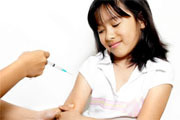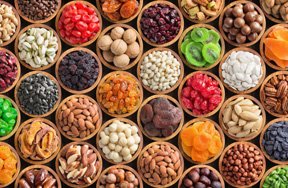
Do you or someone you know suffer from type 1 or 2 diabetes? Heres some more information Kidzworld about diabetes and how it can be treated, diagnosed and prevented...
Whether you know someone who has diabetes or not, it's a disease that you'll come in contact with eventually - with more than 18 million Americans dealing with it on a daily basis. Diabetes affects the pancreas, which is the organ in your body that produces insulin. You need insulin to break sugar down into energy for your cells. When people have diabetes, their pancreas isn't able to produce the insulin that their body needs, which causes a whole ton of trouble for their bodies! Read on to find out who's at risk and how you can help prevent diabetes!
Type 1 Diabetes: Dealing With the Disease
Type 1 diabetes is also known as insulin-dependent diabetes or juvenile diabetes. This is the kind of diabetes that's genetic, which means people are born with it and have to treat it with insulin shots for the rest of their lives. There's usually something that triggers the onset of Type 1 diabetes, like a viral flu or something else in the environment.
Type 2 Diabetes: When Obesity Causes Health Troubles
Type 2 diabetes is also known as adult-onset diabetes and is the most common type of the disease. The reason it's called adult-onset diabetes is because, for the most part, this is the kind of diabetes that adults develop later in life due to unhealthy lifestyles. When people are diagnosed with Type 2 diabetes, it means that their pancreas can produce insulin, but it's unable to make enough to keep up with the sugar in that person's body. In recent years, more kids have been diagnosed with Type 2 diabetes because of an increase in childhood obesity. Between 90-95 percent of all people who suffer from diabetes are afflicted by this type of the disease.
Diabetes: Recognizing the Symptoms
When you have diabetes, your body doesn't have the tools necessary to burn sugar properly, so sugar ends up piling up in your blood. Your kidneys then try to help the situation by filtering out all that excess sugar, which causes you to pee a lot more. No matter how much you eat, your body can't convert it into usable energy - creating a vicious cycle of thirst, hunger, weight loss, fatigue and sometimes even nausea. Type 2 diabetes often takes a lot longer to diagnose because symptoms don't always show up all at once.
Diabetes: Treatment Options
Depending on the type of diabetes that a person has, sometimes the disease can be managed simply with a change in diet and exercise routine. Type 1 always has to be treated with insulin, but both types can be made more manageable by cutting out fatty foods, excess sugars, carbohydrates and by engaging in physical activity on a regular basis. This is especially true for kids who are diagnosed with Type 2 diabetes.

Kidz Submit by:
Nickname: spoonerouno
Age: 14
- For more helpful information on dealing with either type of diabetes, head to the American Diabetes Association.
































